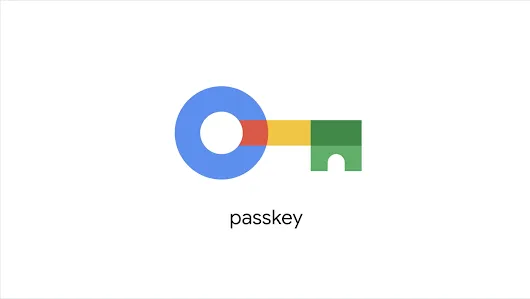
The simplest, most secure way
to sign in to your accounts without a password
Passkeys are an easier and more secure alternative to passwords. They let you sign in with just your fingerprint, face scan or screen lock.

Link to Youtube Video (visible only when JS is disabled)
One step closer to a passwordless future
Enabling a safer ecosystem

Bringing passkeys to businesses and governments

Partners for a passwordless, safer sign-in across the Internet
Common questions about passkeys
Our vision is to progress towards a passwordless future with passkeys that make signing in easier and safer. As we make this transition, passwords will still be available for use whenever you need them.
Yes, you can use your password and a 2nd factor, if you have one set up to sign in. With passkey, you gain the ability to sign in faster instead of your password and your second factor.
If Google detects that you don’t have a passkey on a device yet, we’ll prompt you to create one. You’ll need one passkey per device, unless the device has some mechanism to 'synchronise' passkeys to other devices already, like with Apple iCloud. In this case only a single passkey for all your iCloud devices is required.
Yes, you can continue to log in using your traditional log-in method, which in most cases would be using your username and password.
You can always fall back to legacy authentication options such as passwords and traditional 2-Step Verification. In a case where you can no longer remember your password, you can also go through Google’s account recovery flow. We encourage you to add your email and phone number to ensure that you can always access your account.
If you’re using 'Sign-in with Google', then no. You only need the passkey to get you into your Google Account. If you’re using direct 'password-based' sign-in with a website/service/app today, you may be asked if you'd like to create a separate passkey for that service next time you log in, if the service supports passkeys.
Passkeys can be stored either on a physical security key or on your computing device (phone, PC, Mac, etc). For years, the only place where users could store passkeys was on physical security keys. Now, for added convenience, you can get the same level of protection from phishing that you get with passkeys-on-security-keys, from the passkeys that are now stored on your phone and other devices. You don’t need to do anything differently; things are just more convenient. Instead of needing the passkey on your physical security key when signing in, you can now also use the passkey on your laptop or desktop.
No, you can decide to keep using your password to sign in. However, over time, as users become more accustomed to passkeys, we might limit where we allow passwords to be used because they’re less secure than passkeys.














